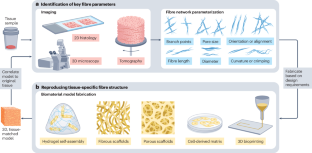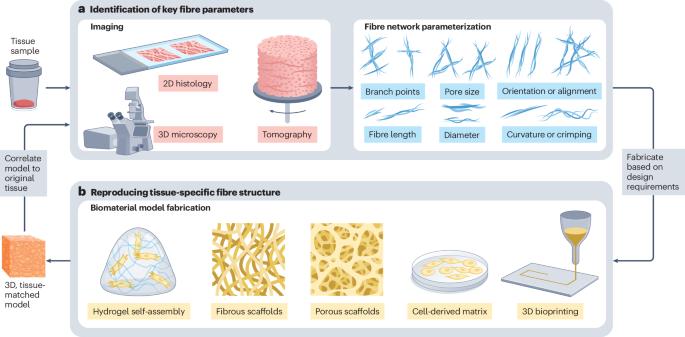The importance of 3D fibre architecture in cancer and implications for biomaterial model design
IF 72.5
1区 医学
Q1 ONCOLOGY
引用次数: 0
Abstract
The need for improved prediction of clinical response is driving the development of cancer models with enhanced physiological relevance. A new concept of ‘precision biomaterials’ is emerging, encompassing patient-mimetic biomaterial models that seek to accurately detect, treat and model cancer by faithfully recapitulating key microenvironmental characteristics. Despite recent advances allowing tissue-mimetic stiffness and molecular composition to be replicated in vitro, approaches for reproducing the 3D fibre architectures found in tumour extracellular matrix (ECM) remain relatively unexplored. Although the precise influences of patient-specific fibre architecture are unclear, we summarize the known roles of tumour fibre architecture, underlining their implications in cell–matrix interactions and ultimately clinical outcome. We then explore the challenges in reproducing tissue-specific 3D fibre architecture(s) in vitro, highlighting relevant biomaterial fabrication techniques and their benefits and limitations. Finally, we discuss imaging and image analysis techniques (focussing on collagen I-optimized approaches) that could hold the key to mapping tumour-specific ECM into high-fidelity biomaterial models. We anticipate that an interdisciplinary approach, combining materials science, cancer research and image analysis, will elucidate the role of 3D fibre architecture in tumour development, leading to the next generation of patient-mimetic models for mechanistic studies and drug discovery. Although there has been increasing interest in developing models that mimic the tumour microenvironment (TME), these models often fail to replicate the complex 3D fibre architectures observed in tumours. Here, Ashworth and Cox address this, discuss the current design and fabrication challenges, and outline state-of-the-art biomaterial technologies useful for recreating tissue-specific 3D architectures in vitro.


三维纤维结构在癌症中的重要性及其对生物材料模型设计的影响
提高临床反应预测能力的需求正在推动具有更强生理相关性的癌症模型的发展。精准生物材料 "这一新概念正在兴起,它包括模拟患者的生物材料模型,旨在通过忠实再现关键的微环境特征来准确检测、治疗和模拟癌症。尽管最近取得了一些进展,可以在体外复制组织仿真硬度和分子组成,但复制肿瘤细胞外基质(ECM)中的三维纤维结构的方法仍相对欠缺。虽然患者特异性纤维结构的确切影响尚不清楚,但我们总结了肿瘤纤维结构的已知作用,强调了它们在细胞-基质相互作用以及最终临床结果中的意义。然后,我们探讨了在体外再现组织特异性三维纤维结构所面临的挑战,重点介绍了相关的生物材料制造技术及其优势和局限性。最后,我们讨论了成像和图像分析技术(重点是胶原蛋白 I 优化方法),这些技术可能是将肿瘤特异性 ECM 映射到高保真生物材料模型中的关键。我们预计,结合材料科学、癌症研究和图像分析的跨学科方法将阐明三维纤维结构在肿瘤发生发展中的作用,从而为机理研究和药物发现提供下一代病人仿真模型。
本文章由计算机程序翻译,如有差异,请以英文原文为准。
求助全文
约1分钟内获得全文
求助全文
来源期刊

Nature Reviews Cancer
医学-肿瘤学
CiteScore
111.90
自引率
0.40%
发文量
97
审稿时长
6-12 weeks
期刊介绍:
Nature Reviews Cancer, a part of the Nature Reviews portfolio of journals, aims to be the premier source of reviews and commentaries for the scientific communities it serves. The correct abbreviation for abstracting and indexing purposes is Nat. Rev. Cancer. The international standard serial numbers (ISSN) for Nature Reviews Cancer are 1474-175X (print) and 1474-1768 (online). Unlike other journals, Nature Reviews Cancer does not have an external editorial board. Instead, all editorial decisions are made by a team of full-time professional editors who are PhD-level scientists. The journal publishes Research Highlights, Comments, Reviews, and Perspectives relevant to cancer researchers, ensuring that the articles reach the widest possible audience due to their broad scope.
 求助内容:
求助内容: 应助结果提醒方式:
应助结果提醒方式:


